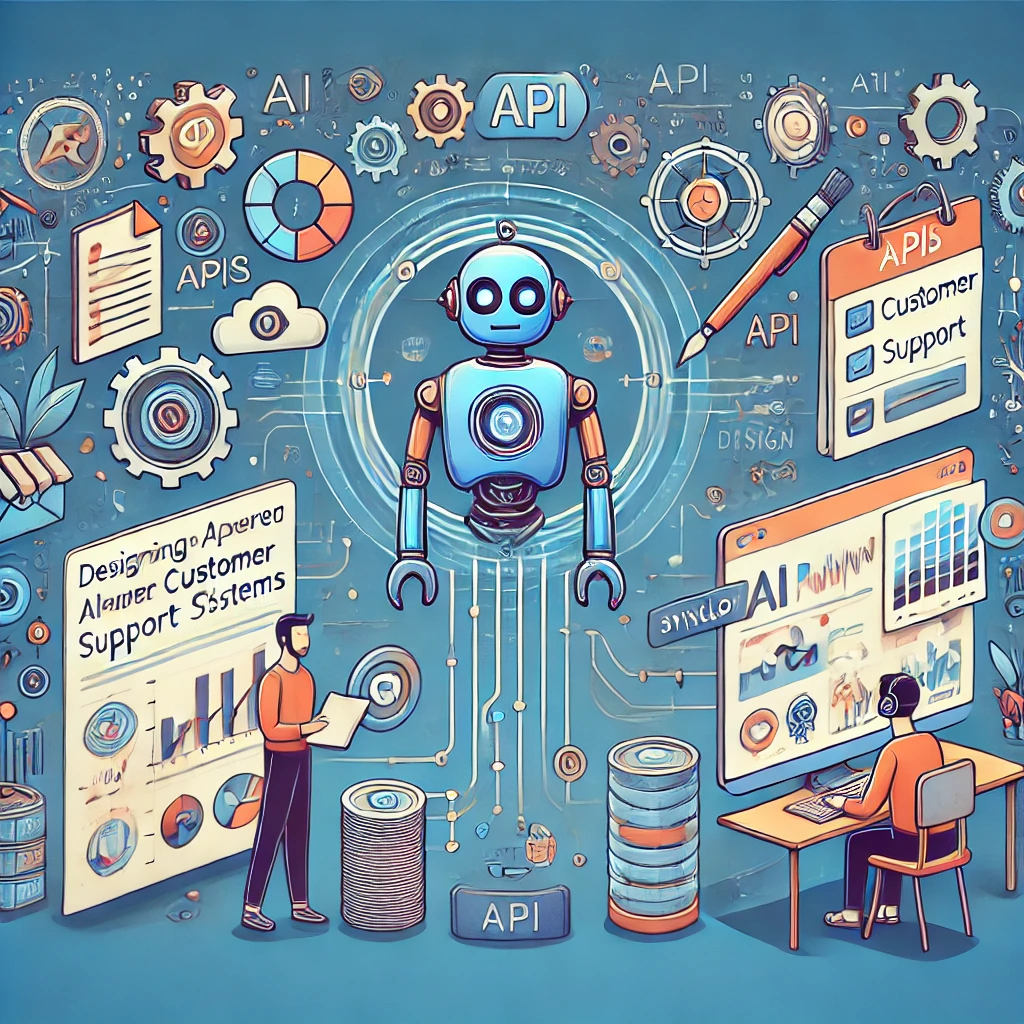Designing APIs for AI-Powered Customer Support Systems Using Syncloop

Syncloop, with its advanced API development tools, simplifies the creation of APIs tailored for AI-powered customer support. This blog explores the best practices and features of Syncloop to build effective APIs that power intelligent customer support solutions.
The Role of APIs in AI-Powered Customer Support
APIs serve as the backbone of AI-powered customer support systems by enabling seamless communication and data exchange between various components. Key functionalities enabled by APIs include:
- Natural Language Processing (NLP): APIs connect AI models to process and interpret customer queries.
- Data Retrieval: APIs fetch relevant customer data from databases to provide personalized support.
- Integration: APIs integrate AI chatbots with CRM systems, knowledge bases, and ticketing platforms.
- Real-Time Interaction: APIs facilitate real-time communication between users and AI agents.
The success of AI-powered customer support relies heavily on well-designed APIs that are scalable, secure, and efficient.
How Syncloop Simplifies API Development for AI Systems
Syncloop provides a comprehensive platform for designing APIs tailored for AI applications. Key benefits include:
- Streamlined Development: Low-code and no-code tools make API development fast and accessible.
- Dynamic Data Mapping: Syncloop ensures data consistency between AI models and external systems.
- Real-Time Processing: Built-in real-time capabilities support instant responses in customer interactions.
- Integration with AI Tools: Syncloop integrates seamlessly with AI platforms and libraries like TensorFlow, OpenAI, and more.
- Advanced Security: The platform supports role-based access control, OAuth 2.0, and data encryption for secure interactions.
Steps to Design APIs for AI-Powered Customer Support with Syncloop
Step 1: Define the Use Case
Begin by identifying the key use cases for the AI-powered customer support system. For example:
- Automating responses to frequently asked questions.
- Escalating complex issues to human agents.
- Integrating chatbots with CRM systems for personalized service.
Step 2: Build the Data Model
Design data structures to handle interactions, customer profiles, and support tickets. Use Syncloop’s dynamic data modeling tools to define fields and relationships that match the needs of the AI system.
Step 3: Develop API Endpoints
Create endpoints for functionalities such as:
- User authentication and session management.
- Query processing and AI response generation.
- Data fetching and updates in the customer database.
- Escalation workflows for unresolved issues.
Step 4: Integrate AI Models
Leverage Syncloop’s compatibility with AI tools to integrate your chatbot or virtual assistant. Use API endpoints to send customer queries to the AI model and retrieve responses.
Step 5: Test and Optimize
Use Syncloop’s testing utilities to ensure APIs are reliable and performant under various conditions. Optimize endpoints for latency, scalability, and accuracy.
Step 6: Deploy and Monitor
Deploy APIs using Syncloop’s cloud-native capabilities. Continuously monitor performance and user interactions through Syncloop’s analytics dashboard.
Best Practices for Designing APIs for AI Systems
- Adopt RESTful Design Principles: Ensure APIs are intuitive, stateless, and consistent in their structure.
- Use Versioning: Maintain backward compatibility when updating APIs to prevent disruptions.
- Implement Robust Error Handling: Provide meaningful error messages to guide developers and users.
- Prioritize Security: Use strong authentication protocols and encrypt sensitive data.
- Optimize for Real-Time Interactions: Minimize latency in API responses to deliver seamless customer experiences.
Features of Syncloop for AI-Powered Customer Support
- Multi-Tenant Support Manage customer support APIs for multiple brands or regions with Syncloop’s multi-tenant capabilities.
- Custom Control Structures Design advanced workflows using Syncloop’s support for Transformers, Ifelse, and Await controls.
- Event-Driven Architecture Enable real-time event handling for customer interactions and notifications.
- Scalable API Gateway Syncloop’s high-performance API gateway handles large volumes of requests, ensuring reliability.
- Advanced Analytics Use built-in dashboards to analyze API usage patterns, customer behavior, and system performance.
Example Use Case: AI Chatbot Integration
An e-commerce company wants to deploy an AI chatbot to handle customer queries. Syncloop facilitates this by:
- Building APIs: To process user inputs and fetch data like order history or product availability.
- Integrating AI Models: Syncloop connects the chatbot’s NLP engine with backend systems.
- Real-Time Interaction: APIs enable instant responses to user queries.
- Escalation Support: APIs direct unresolved queries to human agents.
Benefits of Syncloop for AI-Powered Customer Support
- Faster Development: Intuitive tools reduce development time and effort.
- Scalable Architecture: Handle growing user demands without compromising performance.
- Enhanced Security: Protect sensitive customer data with advanced security features.
- Seamless Integration: Connect with AI models, CRM platforms, and external tools effortlessly.
- Improved User Experience: Real-time processing and reliability ensure smooth customer interactions.
The Future of AI-Powered Customer Support with Syncloop
As AI continues to transform customer support, the demand for efficient, scalable APIs will grow. Syncloop empowers developers to create innovative, secure, and high-performing APIs that enhance customer experiences. By leveraging Syncloop, businesses can stay ahead in delivering intelligent and personalized support.
Image Description
An illustration of an AI-powered customer support system with a chatbot interface, CRM integration, and real-time data flow. The image highlights seamless API communication and Syncloop’s platform in action.
Back to Blogs